BELOW YOU WILL FIND MORE INFORMATION ON THIS CRIMINAL ENTERPRISE OF NANOROBOTS AND OFFENSIVE INFRASTRUCTURE OF STREET LIGHTING, BIOMETRICS, AND SO ON.
THE BACTERIA WAS FED MOLTEN METALLIC MINERALS, AND IN REACTION TO ULTRAVIOLET LIGHTING CONSTRUCTED A PRECISE ELECTRICAL CIRCUIT, WHICH ENABLES RECEPTION OF HF RADIO WAVES
https://www.youtube.com/watch?v=3CqtTn-P-CE A closer look at the purple streetlights, black lights all over the U.S.
25:23 These my friends are blacklights
I'm an over the road truck driver. They are popping up everywhere on the interstates. Especially around the major hub cities. I've also seen them popping up around big corporate shippers, and receivers.
6:57 Anything above 1000 is deemed dangerous um by the united states, so it should always be under a thousand which is actually already high. Other countries have it like 800 they deem 800 the top at the highest safe level
11:37 It just went up to eighteen thousand
https://patents.google.com/patent/US20120250948A1/en System and Method for Biometric Identification using Ultraviolet (UV) Image Data
Abstract
A system and method for biometric identification of a target individual based on a query containing UV image data of the target individual. In one embodiment, the system includes a first database, a query module, a detection module, a sequence module and a match module. The first database includes a plurality of identities with each identity having at least one binary sequence representative of a skin area of that identity. The query module receives the query and validates the UV image data. The detection module detects at least one skin area in the UV image data. The sequence module forms at least one target binary sequence corresponding to the at least one skin area. The match module searches the first database based on the at least one target binary sequence to identify at least one identity thereby facilitating biometric identification of the target individual.
Sensors 124 may be implemented in the form of any one or more Suitable types of sensors configured to detect and/or measure features on a target individual through the use of Ultraviolet (UV) light to capture an image of the target individual at UV wavelengths. For example, a UV camera for capturing an image of the target individual by way of detecting UV light bouncing off of exposed skin areas on the target individual revealing details of the skin's texture.
https://www.youtube.com/watch?v=emEXmUnXMTw
What’s Hidden In Your New ‘Smart City’ Street Lights?
Such a benign and banal part of the urban landscape that city-dwellers may not even notice them, street lights are useful for brightening up a road and not much else – or so you might think. People these days are used to the idea of CCTV cameras, even hidden ones, but street lights tend to blend in to the background.
Perhaps that is why they are finding new functions in the modern world, with its zealotry for surveillance. These seemingly innocuous devices can host anything from microphones and cameras to facial recognition and de facto compulsory 5Gwifi transmission.
As Chuck Campagna, CEO of lighting company Amerlux, told The New York Times, “We are opening up an entirely new area in lighting applications and services, including video-based security and public safety, parking management, predictive maintenance and more.”
“We felt what you’d want to use this network for is to gather information about people and the planet.”
Lighting in a Smart City
In April 2018, Singapore announced that it would run a “Lamppost-as-a-Platform” pilot program, in which a variety of sensors, including cameras linked to facial-recognition technology, would be attached to street lighting. GovTech, the department in charge of the project, told Reuters that
the technology would be used to perform “crowd analytics” and help in terrorism investigations.
According to the city-state’s former top civil servant Peter Ong, the goal is to link every lamppost to a network of sensors. In October, it was announced that Singapore Technologies Engineering (STENGG) had won the bid to provide the technology, and a similar smart lamppost program would commence in Hong Kong, where 50 of the lights are set to be installed by June. The Hong Kong lamppost design certainly contains surveillance cameras, but it is unclear whether they also will be linked to facial-recognition programs.
STENGG’s smart lampposts are designed merely to be
a thread in a wider Internet of Things web, in which virtually every object is connected to a shared network.
As part of such a system, lampposts are so much more than just street illuminators;
they are multi-purpose devices used to monitor the cityscape.
The design incorporates environmental sensors, a wifi hotspot, an infotainment display, radar for vehicle monitoring, and, of course, equipment for “public safety and traffic surveillance.”
Naturally, this aspect of the network is downplayed; a promotional video for the company’s WISX Internet of Things system doesn’t mention population surveillance at all, and neither does a Hong Kong government brochure.
Singapore is a successful country but one well known for highly controlled social discipline.
Would Western countries allow such potentially invasive technology to be planted on every street?
In STENGG’s 2018 sustainability performance review, CEO Vincent Chong says the company has been hired to enable smart street lighting in cities in Canada, the United States, Britain, New Zealand, and Israel, as well for as other infrastructure projects across the globe.
Urban Surveillance
It isn’t necessary to create an entire smart grid in order to install surveillance technology into street lights. As early as 2007, the idea of securing cameras to street lights was being discussed in the United Kingdom; in 2010, a system of microphones was deployed on street lights in several British cities.
The high-powered microphones were designed to pick up on angry or distressed voices and suspicious sounds, automatically triggering a linked camera to zoom in on the source of the noise.
Similar technology has been used in several U.S. cities, most notably New York, which fixed microphones to street lamps in high-crime neighborhoods.
The ShotSpotter sensors are said to pick up only loud, suspicious noises, such as gunshots or shouting, and then send an alert to the police department. Although the data appear to have been less than dependable, it has not stopped police from attempting to use it as evidence in criminal trials.
“There’s a few things that are problematic,” said Monroe County Assistant Public Defender Katie Higgins, working on behalf of Silvon Simmons, a man on trial for allegedly shooting at a police officer in 2016, based on ShotSpotter recordings. “One is that it was designed to be an investigative tool for the police, to alert them to possible gunfire and allow them to respond to see if there are civilian witnesses or other evidence of gunfire. But it was not designed to be used as actual primary evidence (in a trial).” The judge in the case apparently agreed, having ruled the recordings too “unreliable” for use as the key piece of evidence to convict a man.
In 2017, San Diego became perhaps the U.S. city most invested in surveillance street lighting, teaming up with General Electric to install cameras, microphones, and sensors in more than 3,000 lampposts.
Other locales, as well as federal agencies, have ordered recording equipment for installation in street lamps.
Immigration and Customs Enforcement (ICE) and the U.S. Drug Enforcement Administration (DEA) have purchased such devices, Quartz reports, based on government procurement documents.
Christie Crawford, owner of Cowboy Streetlight Concealments, from which the DEA purchases equipment, said:
“We do street light concealments and camera enclosures. Basically, there’s businesses out there that will build concealments for the government and that’s what we do. They specify what’s best for them, and we make it. And that’s about all I can probably say .…
I can tell you this—things are always being watched. It doesn’t matter if you’re driving down the street or visiting a friend, if government or law enforcement has a reason to set up surveillance, there’s great technology out there to do it.”
Urban Solution or Tool of Tyranny?
Finally, 5G wireless internet is well and truly being rolled out in 2019. While previous wifi connections, such as 4G, have been optional in one’s home – a resident could either choose to purchase wifi or not – street lights are one of the vehicles to carry 5G transmitters.
Due to the high-frequency, short-range nature of 5G’s millimeter waves, it’s necessary to situate transmitters at regular intervals in order to keep a signal going. You will no longer have any choice over whether you want a constant wifi signal in your residence; it will be effectively mandatory for all urban dwellers because the electromagnetic signals will be blasted into homes from the street. Given the untested nature of 5G technology, some people may want a little more control over their exposure than that.
Are smart lampposts the next great solution for urban planning and city management, or
a convenient mechanism for public surveillance?
[It seems almost ridiculous to suggest that]
street lamps could be the next most useful tool of tyranny, but their very banality and regular placement on streets makes them the perfect vehicle to monitor – and, therefore, control – wide swathes of the world’s population.
https://web.archive.org/web/20150102072055/http://www.bacheletscience.com/
PHOTO GALLERY
MEDIA
An interview with Dr. Bachelet - Epoch Times Israel
Bezelet explains to me that his lab doesn't have such a definition. "There is no specific field of research. We mostly do things that interest us," he says. "We're working on nanorobots, on the architecture of birds' nests, on materials that assemble themselves, on a lot of topics."
B'Tselet's talk at TEDMED Israel in April last year sparked a huge wave of interest in his research. B'Tselet is developing nanorobots that can treat diseases. They could, for example, cure cancer. According to the plan, tiny robots made up of DNA molecules will carry powerful drugs with them, releasing them only when they reach the cancer cells. In this way, the drug will be able to damage exactly the cells we want it to harm, and not the rest of the body.
B'Tzelet also made metal nanoparticles for his nanorobots, so he can control them remotely using a joystick and direct them where he wants them to go.
Since the nanorobots' controller will be connected to the Internet, it can give the nanorobots an Internet address, an IP address, and actually control them from a remote location, such as using a smartphone.
Dr. Bachelet kills cancer with nanorobots - GeekTime Conference 2014
GKT Conference 2014: Dr. Ido Bachelet Kills Cancer With Nanorobots
Injecting nanorobots into your blood cells to detect cancer cells sounds like a sci-fi movie — and that’s precisely what Bachelet does
He is also using “DNA Origami” to use DNA coding to fold into 2D and 3D shapes. As he explained to Geektime after the presentation, with 4D printing, “you have to make the bricks only once, and then you can make whatever you want.
Ido Bachelet - Surgical nanorobots - Google's Solve For X 2014
Ido Bachelet - How nanorobots will change medicine - TED Med 2013
Dr. Ido Bachelet- TED Med 2014
Dr. Bachelet - DNA nanobots coming to your bloodstream- Globes English
How are nanometer robots produced? First, produce a DNA sequence of your choice, then replicate it using the origami DNA method. With this technique, a person can give orders to a computer to fold the DNA molecules as required.
"We create clusters of robots, which together operate the laws of logic at the level of an eight-kilobit computer, like the camcorder I had when I was a kid."
In theory, these robots can change their shape in response to signals from the body and link up with each other.
Miniature antennas
This is not all. It is possible to include with the nanometer-sized DNA molecule a miniature antenna. When the antenna receives a signal, it causes a tiny change in the molecule, telling it to open or close, self-destruct, or attach to another molecule. The signal is sent from a transmitter outside the body, and the process is remotely controlled via the Internet.
Dr. Bachelet - DNA robot could kill cancer cells-
Nature
Device identifies target then releases deadly payload.
It might be possible to coat them with a substance such as polyethylene glycol, widely used to boost the length of time a drug can remain in the body
Dr. Ido Bachelet - Bacterial Radio- Information & Mind
https://web.archive.org/web/20150323175634/http://horizon-magazine.eu/printpdf/1673
Folding DNA Manipulated molecules are also being used inside the body to treat disease.
Scientists working on the EU-funded MRECB and DNA NANO-ROUTERS projects are folding strands of DNA to make so-called nanorobots that can be used to deliver drugs.
The advantage of DNA is that it can be folded into various shapes, a bit like making origami.
A team at Israel’s Bar-Ilan University led by Dr Ido Bachelet and funded by the European Research Council is working on nanorobots that can be programmed to detect certain conditions, like a tumor, and then deliver drugs to treat the affected cells. Taking that a step further, researchers on MRECB are trying to get the robots to behave as an intelligent swarm, for example linking together at the right point to help tissues regrow. The robots could even be used to alter the communication network between cells in the body by picking up and delivering signal molecules. That could stop cells from over-transmitting certain signals, such as an immune response.
https://cordis.europa.eu/project/id/321772/results
https://www.ncbi.nlm.nih.gov/pmc/articles/PMC4513873/ Cooperativity-based modeling of heterotypic DNA nanostructure assembly - PMC (nih.gov)
https://journals.plos.org/plosone/article/file?id=10.1371/journal.pone.0161227&type=printable
In the last two decades there has been extensive progress in brain-computer interfaces (BCIs), allowing both healthy and disabled individuals to control a wide range of devices using mental activity alone[4,5]. The mental activity is decoded from brain activity by applying a combination of signal processing and machine learning techniques to various neurophysiological signals, recorded invasively or non-invasively. Such BCIs allow people to move a cursor on a screen[6], navigate in virtual reality[7], control robots[8], robotic prostheses[9,10], and more. Real-time brain mapping technologies are also suggested in assisting the diagnosis and treatment of mental disorders, providing a new communication and control technology for disabled individuals and the general population[11,12,13]. Nevertheless, so far no interface has been established between a human mind and a therapeutic molecule, which are 10 orders of magnitude apart. The purpose of this study was to show that DNA robots can bridge this gap.
To establish a direct control interface to DNA robots, we designed robots that can be electronically remote-controlled. This was done by adding metal nanoparticles to the robotic gates, which could heat in response to an electromagnetic field.
DNA origami robots
Robots were designed with caDNAno 2.0[15] (caDNAno files are available in the supporting information to this paper), using the M13mp18 bacteriophage ssDNA as a scaffold strand. Staple strands were synthesized by Integrated DNA Technologies (IDT). Folding was carried out in folding buffer (1X Tris-Acetate-EDTA supplemented with 10 mM Mg2+) on a standard thermal cycler according the following annealing sequence: 80°C to 61°C at 5 min/°C, and then 60°C to 25°C at 60 min/°C. Folded robots were partially purified by a single round centrifugal gel filtration on an Amicon Ultra column with molecular weight cutoff of 100 KDa. NHS-functionalized iron oxide nanoparticles were covalently attached to the robots using the internal amino-deoxythymidine residues introduced in the design process, by mixing nanoparticles and robots at a nanoparticle molar excess of 100:1, followed by two more rounds of purification. Prior to injection, robots were exchanged into phosphate buffered saline containing 10 mM Mg2+. Antibody Fab’ fragment payload was prepared by cleaving whole IgG molecules using a commercially available Fab’ preparation kit according to the manufacturer’s instructions. The antibody fragments were tagged by amine-reactive DyLight 650, purified and chemically conjugated to amine-modified U1c DNA (5’-NH2-GAACTGGAGTAGCACAA-3’) using EDC conjugation. Following purification of the product, the payload fragments were mixed with robots at a molar excess of 20:1 (payloads over robots) for at least 1 hour at room temperature, prior to addition of guide removal strands and a final purification round of loaded robots.
https://web.archive.org/web/20230321080759/https://www.pfizer.com/print/pdf/node/555751
Bar Ilan University to work with Pfizer Inc. to evaluate drug delivery via DNA Nanorobots Thursday, May 14, 2015 - 08:00am BIRAD – Bar Ilan University Research and Development Company Ltd. (BIRAD), and the biodesign lab headed by Dr. Ido Bachelet at Bar Ilan University, announced that BIRAD has entered into an evaluation agreement with Pfizer Inc. This agreement is focused on gaining a better understanding into DNA nanorobots as potential carriers of different proteins for possible new treatments.
http://europepmc.org/backend/ptpmcrender.fcgi?accid=PMC6778202&blobtype=pdf Digitizable therapeutics for decentralized mitigation of global pandemics
Adar Hacohen1,2, ReuvenCohen 3, Sol Efroni 2, Baruch Barzel 3 & Ido Bachelet 1
Received: 23 April 2019
When confronted with a globally spreading epidemic, we seek efficient strategies for drug dissemination, creating a competition between supply and demand at a global scale.
Propagating along similar networks, e.g., air-transportation, the spreading dynamics of the supply vs. the demand are, however, fundamentally different, with the pathogens driven by contagion dynamics, and the drugs by commodity flow. We show that these different dynamics lead to intrinsically distinct spreading patterns: while viruses spread homogeneously across all destinations, creating a concurrent global demand, commodity flow unavoidably leads to a highly uneven spread, in which selected nodes are rapidly supplied, while the majority remains deprived. Consequently, even under ideal conditions of extreme production and shipping capacities, due to the inherent heterogeneity of network-based commodity flow, efficient mitigation becomes practically unattainable, as homogeneous demand is met by highly heterogeneous supply. Therefore, we propose here a decentralized mitigation strategy, based on local production and dissemination of therapeutics, that, in effect, bypasses the existing distribution networks. Such decentralization is enabled thanks to the recent development of digitizable therapeutics, based on, e.g., short DNA sequences or printable chemical compounds, that can be distributed as digital sequence fles and synthesized on location via DNA/3D printing technology. We test our decentralized mitigation under extremely challenging conditions, such as suppressed local production rates or low therapeutic efficacy, and find that thanks to its homogeneous nature, it consistently outperforms the centralized alternative, saving many more lives with significantly less resources.
In recent pandemics, from SARS to the West-African Ebola, we have fortunately averted a major global spread…
Box 2. Modeling a lethal global epidemic under centralized and decentralized mitigation…
https://en.wikipedia.org/wiki/Ido_Bachelet
Personal life
Ido Bachelet, born in Kibbutz Nir Yitzhak to Uri and Shelit,[5] lives in Tel Aviv. His cousin, Michelle Bachelet was President of Chile (a Chilean politician who served as United Nations High Commissioner for Human Rights from 2018 to 2022, who previously served as President of Chile from 2006 to 2010 and from 2014 to 2018 for the Socialist Party of Chile).
…
How it's all interconnected....
SAFE AND EFFECTIVE? OR NOT?
https://backend.orbit.dtu.dk/ws/files/223405512/d0en00570c.pdf Environmental and health risks of nanorobots: An early review, 2020
This is where most efforts in terms of risk-related research have occurred during the 2000s, in particular for a limited set of nanomaterials, including silver nanoparticles, titanium dioxide nanoparticles, silica nanoparticles, cerium dioxide nanoparticles, zinc oxide nanoparticles, iron nanoparticles, quantum dots, fullerenes, carbon nanotubes and graphene.
Despite this development, research on risks related to nanorobots have so far been limited. History shows several examples of how the introduction of new technology that offered great benefits into society later turned out to also cause notable environmental and health impacts.
So far, only a few references to environmental and health risks can be found in the literature about nanorobots. Kostarelos58 wrote briefly about the safety of nanorobots, commenting that nanorobots “will need to be toxicologically inert, degradable or expelled from the body”. One might note that this mainly refers to human toxicity and not subsequent environmental effects that might occur after the nanorobots have become expelled from bodies. Gao and Wang13 wrote about the use of nanorobots (mainly nanorods) for environmental sensing, monitoring and remediation. They comment that “the potential toxicity of micro/nano-scale motors needs to be evaluated to prevent potential adverse environmental impacts”. However, they do not provide any specific recommendations on how that could be accomplished, despite envisioning wide-spread use of nanorobots in the environment.
Surana et al.59 did a study on DNA nanorobots and their compatibility with the immune system of higher organisms. They comment that foreign, ‘non-self’ DNA from other organisms can be harmful and therefore immunogenic, since they trigger the immune system:
“Even though DNA is a natural biopolymer, when present at the wrong place at the wrong time it can elicit a strong inflammatory reaction”.
Therefore, they asserted that it is important to consider the various cellular and systemic responses that such DNA architectures might elicit, which are likely to be specie-specific. Such considerations have a dual purpose: it is both to keep the organism in questions safe from the DNA nanorobot but also to ensure the proper medical function of the DNA nanorobot in cells. Again, the focus is on human toxicological responses rather than on environmental toxicity.
To these considerations of nanorobot risks in the previous literature, we might add a number of potential hazards. That foreign DNA can elicit immunologic and inflammatory responses has been noted above. Other materials used in contemporary nanorobot designs (see e.g. Table 1) might also potentially have hazardous properties that warrant further investigations. For example, the nickel used in order to magnetically control the propulsion of several helices and nanorods is known to be allergenic, carcinogenic (though not in pure metallic form), toxic at high doses and in certain forms, as well as teratogenic at high doses.60 Allergenic reactions have already been seen for people working with nano-sized nickel powder.61 The silver sometimes used for making hinges in designs with several connected nanorods is also known to be toxic to organisms in the environment – both in nano-form and when dissolved into silver ions.62,63 However, silver is not toxic to humans. High silver intake results in discoloration of the skin and internal organs (argyria and argyrosis, respectively), both which do not seem to bring any negative health effects.62
In addition, the UV light used for propulsion in some nanorod designs is known to be able to cause skin damage and, in the worst case, skin cancer.
Foreign DNA, nickel, silver and UV light are all established hazards.
Whether their use in specific nanorobot applications constitute risks remains to be investigated.
Novel hazards associated with nanorobots might be related to the control of nanorobot propulsion and navigation – whether by chemical propulsion, magnetic fields, sound waves, bioreceptor binding and/or light – potentially making the nanorobots travel to places in the human body and elsewhere where they are not supposed to.
Should loss of propulsion control or targeting of an erroneous site occur, hazardous drugs might be delivered to healthy cells. An erroneous targeting might cause high concentrations locally, so that a small number of nanorobots potentially causes much harm.
https://jhoonline.biomedcentral.com/articles/10.1186/s13045-023-01463-z Advances of medical nanorobots for future cancer treatments | Journal of Hematology & Oncology | Full Text (biomedcentral.com)
External ultrasound-driven nanorobots
It is relatively easy to establish an acoustic condition. Being able to be transmitted in such media as solid, liquid and air, sound waves could penetrate deeply into biological tissues to power nanorobots from outside without causing noticeable harm to the human body. However, application of ultrasound may result in cellular oxidative stress, which may influence both target tumor cells and normal cells [137]. The underlying mechanism is that the ultrasonic wave exerts a local acoustic streaming strain on the surface of asymmetric nanorod-nanorobots, which generates a driving force for the movement of nanorobots. High-intensity focused ultrasound could be used to induce quick evaporation of chemical fuel and to drive tubular nanorobots in a flexible movement state.
Such kind of microtube-based robots could move at an extremely high rate and penetrate into tissues with strong propelling force [138].
[HEMORRHAGIC FEVER?]
Biocompatibility and safety considerations
A pivotal aspect distinguishing medical nanorobots from conventional nanomaterials is the imperative to ensure biocompatibility and safety. Owing to their elaborate design and intended interactions with intricate biological systems, nanorobots must be fabricated with biocompatible materials and components to circumvent eliciting adverse reactions or immune responses. This requirement necessitates meticulous contemplation of various factors, such as the selection of materials, surface chemistry, and potential for long-term accumulation within the body. Furthermore, addressing the potential risks of toxicity and clearance of nanorobots is crucial to protect patient health [169, 170].
While conventional nanomaterials are also mandated to be biocompatible, their relatively simpler design and fewer interactions with the body result in a less convoluted safety profile. Conventional nanomaterials generally comprise well-established materials such as liposomes or polymeric nanoparticles, which possess a more linear safety evaluation process [171, 172].
Nonetheless, both medical nanorobots and conventional nanomaterials must undergo rigorous safety assessments, preclinical testing, and regulatory approval before being deployed in clinical applications.
THIS ARTICLE WAS PUBLISHED IN 2023, WHILE THESE "NANOROBOTS" ARE ALREADY INJECTED INTO HEALTHY PEOPLE, EVEN VERY YOUNG CHILDREN, BABIES OR PREGNANT WOMEN
Commonly utilized sources of external power include magnetic fields, electric fields, light energy, acoustic waves, and heat energy.
https://fjps.springeropen.com/articles/10.1186/s43094-023-00577-y Multifaceted applications of micro/nanorobots in pharmaceutical drug delivery systems: a comprehensive review | Future Journal of Pharmaceutical Sciences | Full Text (springeropen.com)
The biocompatible materials used in nanorobot construction or designs must be ensured that the materials are non-toxic and biocompatible is paramount. Materials should not trigger adverse immune responses or tissue damage [45]. Considering in-vivo degradation, the nanorobots should be designed to degrade naturally or be eliminated from the body without leaving harmful residues or by-products inside the physiological systems [5]. Taking biological barriers into account, several research suggested that overcoming barriers such as the blood–brain barrier (BBB), and ensuring that micro/nanorobots can safely traverse them without causing damage is crucial for targeted drug delivery [46, 47]. According to Arvidsson and Hansen, 2020, it must be noted that nanorobots must be controlled to prevent unintended movement and potential harm to healthy tissues. Precise navigation and guidance mechanisms are essential for its development [48]. Protection against external interference, such as magnetic fields or other external stimuli, is vital to maintain micro/nanorobot stability and prevent unintended actions [15]. Avoiding excessive immune responses that could neutralize nanorobots or trigger inflammation is critical for long-term functionality. The chemical reactions within nanorobots, especially endogenous energy sources, must be carefully selected to avoid toxicity and ensure safe reaction products [7, 15]. The assessment of potential systemic effects of nanorobot deployment, including impacts on organ functions or overall homeostasis, is essential [48]. Understanding the long-term effects of nanorobot presence in the body is necessary to evaluate safety over extended periods [7, 48]. Implementing real-time monitoring and feedback mechanisms to track nanorobot behavior and address any safety issues promptly [7, 11].
ETC.




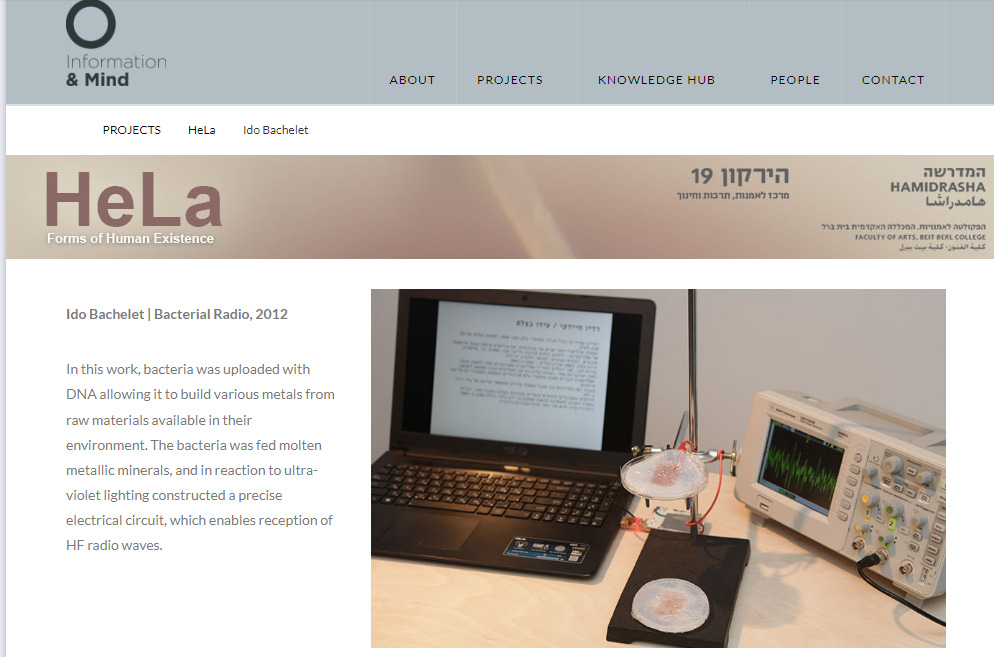


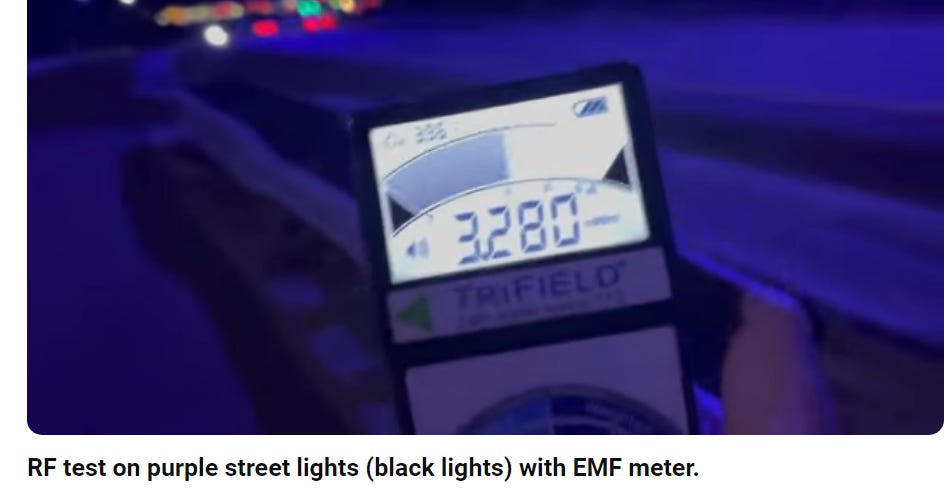










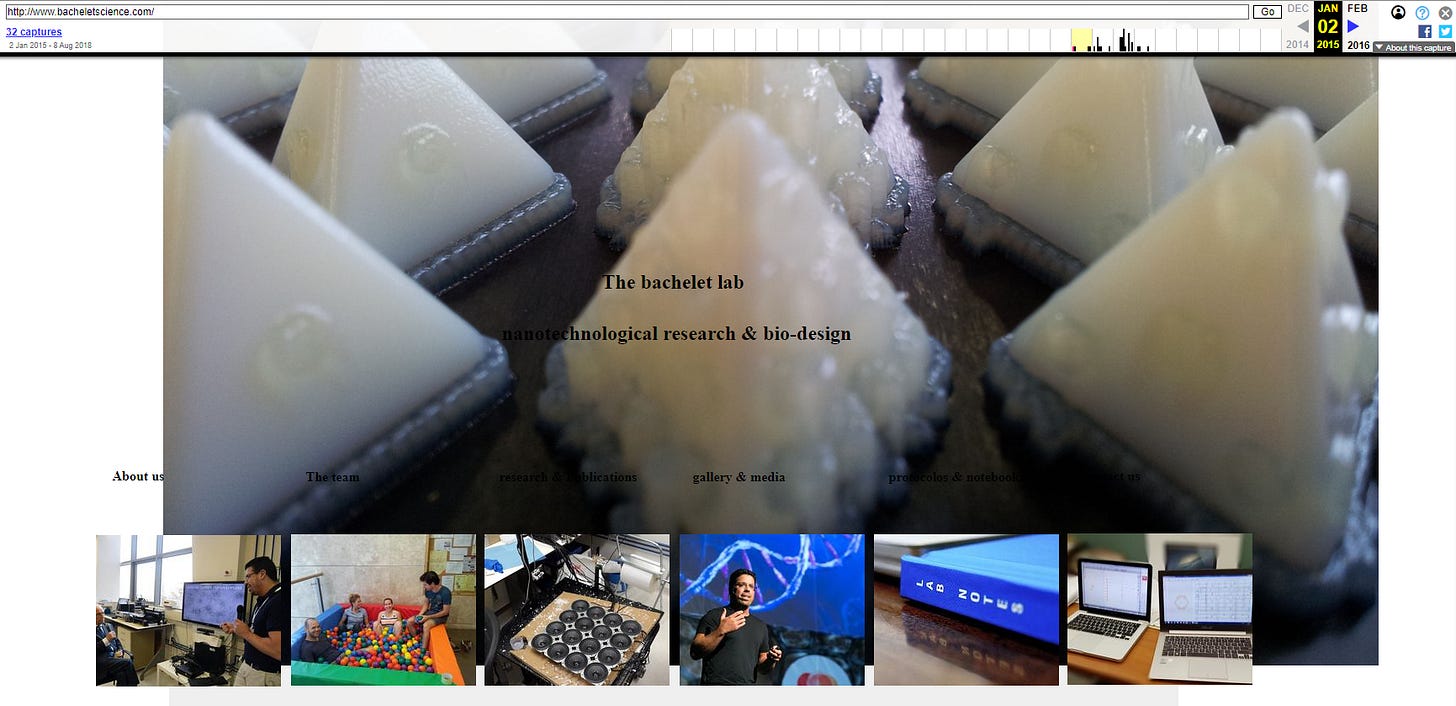

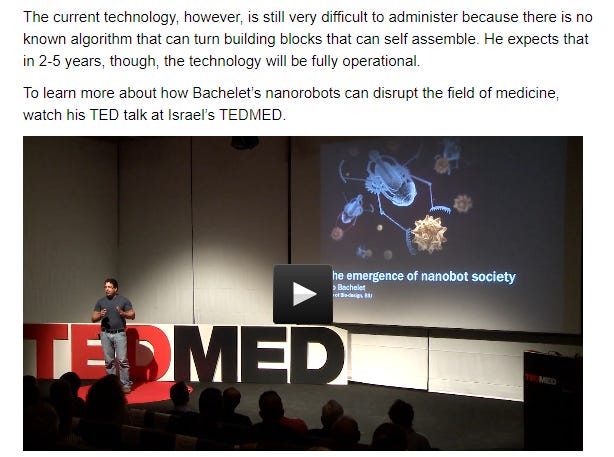
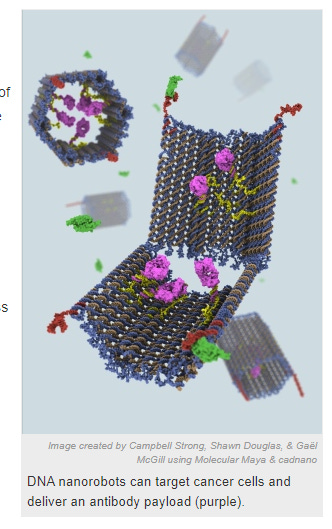





Total war against humanity.
Unfortunately, there is deliberately little talk about billion-funded nanotechnology as part of the World Economic Forum's fourth industrial revolution. Now, they keep waving at us the DNA contamination of RNA products, hiding the elephant in the room. And everybody applauds. It is very serious, because this is how they lead us in the direction they want. The "resistance" movement everywhere seems to be infiltrating. It was logical, because in such a diabolical plan they planned the second echelon. They just weren't going to lose power... Anyone who is well-intentioned, sincere and really wants these bastards not to swallow us up completely needs to get informed and propagate information about nanotechnology. This is my opinion, that of a Romanian gynecologist, rejected by the system but, unfortunately for them, quite educated and at the same time a mother, having some faith in God.